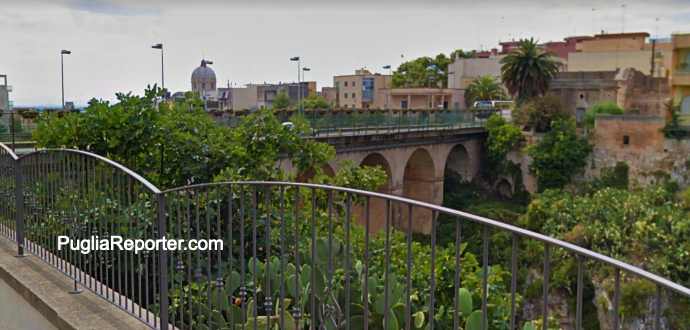 The numerous caves in Salento, such as Grotta Romanelli , bear witness to a very long “war” which has now been partly lost in the memories of modern civilization: that for drinking water . In fact, millennia ago, Puglia did not have a real aqueduct and therefore the collection and conservation of fresh water represented a fundamental step for the survival of the ancient colonizing peoples . In our Apulia (which in Latin really means ” without water “, or rather an ” arid land ” also for the later Roman peoples), the calcareous constitutionof the vast majority of rock formations present there did not guarantee the conservation of water but the karst phenomena , exploited in an intelligent way, did not prevent it. Let’s find out how:
The numerous caves in Salento, such as Grotta Romanelli , bear witness to a very long “war” which has now been partly lost in the memories of modern civilization: that for drinking water . In fact, millennia ago, Puglia did not have a real aqueduct and therefore the collection and conservation of fresh water represented a fundamental step for the survival of the ancient colonizing peoples . In our Apulia (which in Latin really means ” without water “, or rather an ” arid land ” also for the later Roman peoples), the calcareous constitutionof the vast majority of rock formations present there did not guarantee the conservation of water but the karst phenomena , exploited in an intelligent way, did not prevent it. Let’s find out how:
“The chemical and mechanical action of rainwater circulating on the surface, in fact, perpetrated on water-soluble rocks, such as limestone, has meant that over the millennia the typical karst landscape was created, devoid of surface hydrography and on the other hand full of caves, sinkholes, sinkholes, caves, natural wells, which have fed a group of humans and animals, perennially engaged in the search for water to quench their thirst, will have fought bitterly and perhaps violently for the few surface water resources present in the heel of the boot. latter, by a special law (n. 2644 of 08/10/1884) and by subsequent royal decrees, in a list of 16 sources for which “‘ ℎ” ( Canale Fano a Salve ,Fosso dei Samari in Gallipoli, the Idro River and the Alimini Piccolo Lake in Otranto , the Rauccio Canal in Lecce , …)” – we read in Archeologia del Salento . The analysis therefore concludes as follows:
“The “great war” lasted until a few decades ago, before the advent of the Apulian aqueduct and the possibility of digging artesian wells capable of intercepting the aquifers that flow under our feet. The ̀ had to be ingenious and make, as always, a virtue of necessity (peasant, red shoe, cervellu finu), building cisterns for storing rainwater and implementing elementary but effective hydraulic engineering projects with the aim of conveying inside them, by means of sometimes intricate systems of channels, the precious rainwater, also exploiting the flat roofs of the liame/lamie and pajare”. Similar observations were also confirmed by a scientific studyconcerning the specific analysis of the archaeological remains of Grottaglie (in the Taranto area) which confirm how the ancient settler peoples (the so-called rock civilizations ) made use of a sustainable system of the territory, creating a system of transport and collection of rainwater : furrows dug directly in the rock – geologically classifiable as of the Plio-Pleistocene calcarenite type , rather “soft” and therefore suitable for artificial modeling – from the plateau above the valley of the cliff they thus allowed the water to flow downstream, until it ended up in cisterns built ad hoc . Furthermore, with these systems it was possible to guarantee that the water remained fresh.
Sources:
https://link.springer.com/article/10.1007/s12665-020-09212-y
Regarding the PugliaReporter.com blog , we remind you that it is possible to receive all the news in real time from Telegram by registering at the following address > https://t.me/pugliareporter < from Instagram at the following address > instagram.com/puglia_reporter < as well as from Facebook by clicking ” like ” on Facebook.com/PugliaReporter and from Twitter at the following address > twitter.com/pugliareporter < . Also through Telegram it is also possible to send us reports in real time also withvideos and photos . It is also possible to write to us via Whatsapp to send us reports also with photos and videos by clicking here and subscribe to the Whatsapp group to receive our links by clicking here .

